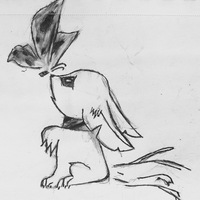
Два поезда едут навстречу друг другу с постоянными скоростями. В состав каждого из поездов входит
по 15 одинаковых вагонов. Через 28 секунд после встречи их первых вагонов пассажир Александр, сидя в купе третьего вагона, поравнялся с пассажиром Сергеем, а ещё через 32 секунды последние вагоны этих поездов полностью разъехались. В каком по счёту вагоне ехал Сергей? 0
0
 0
0
Ответы на вопрос
 Внимание! Ответы на вопросы дают живые люди. Они могут содержать ошибочную информацию, заблуждения, а также ответы могут быть сгенерированы нейросетями. Будьте внимательны. Если вы уверены, что ответ неверный, нажмите кнопку "Пожаловаться" под ответом.
Внимание! Ответы на вопросы дают живые люди. Они могут содержать ошибочную информацию, заблуждения, а также ответы могут быть сгенерированы нейросетями. Будьте внимательны. Если вы уверены, что ответ неверный, нажмите кнопку "Пожаловаться" под ответом.

Ответ:
23
Пошаговое объяснение:
 0
0
 0
0

Ответ:
Заметим, что при движении в какую-либо сторону номера вагонов одного поезда увеличиваются, а другого уменьшаются. Но общая сумма номеров вагонов, стоящих друг напротив друга, постоянна. Эта сумма равна 12+12=24. Значит, напротив восьмого вагона стоит вагон с номером 24-8=16.
Ответ: шестнадцатый
Пошаговое объяснение:
 0
0
 0
0

Problem Analysis
We have two trains traveling towards each other with constant speeds. Each train consists of 15 identical wagons. We are given information about the passengers Alexander and Sergey, who meet each other at a certain time and distance. We need to determine which wagon Sergey was in.Solution
Let's analyze the given information step by step to find the solution.1. The first piece of information states that 28 seconds after the first wagons of the trains meet, Alexander, sitting in the third wagon, aligns with Sergey. This means that Alexander and Sergey are at the same position relative to their respective trains at this time.
2. The second piece of information states that 32 seconds after the last wagons of the trains pass each other, the trains are completely separated. This means that the distance between the trains is equal to the combined length of both trains.
To solve the problem, we need to find the time it takes for the first wagons to meet and the time it takes for the last wagons to completely separate. Then we can calculate the position of Sergey relative to the first wagon.
Let's calculate the time it takes for the first wagons to meet:
1. Let's assume the speed of each train is v and the length of each wagon is l. 2. The relative speed of the two trains is 2v because they are moving towards each other. 3. The time it takes for the first wagons to meet is given by the formula: time = distance / relative speed. 4. The distance between the first wagons is 15l because each train has 15 wagons. 5. Substituting the values, we get: time = 15l / 2v = 7.5l / v.
Now let's calculate the time it takes for the last wagons to completely separate:
1. The distance between the last wagons is also 15l. 2. The time it takes for the last wagons to completely separate is given by the formula: time = distance / relative speed. 3. The relative speed of the two trains is still 2v. 4. Substituting the values, we get: time = 15l / 2v = 7.5l / v.
Since the time it takes for the first wagons to meet and the time it takes for the last wagons to completely separate are the same, we can conclude that Sergey was in the third wagon.
Answer
Sergey was in the third wagon.Explanation
The time it takes for the first wagons to meet and the time it takes for the last wagons to completely separate are the same. This means that Sergey, who was in the third wagon, aligned with Alexander 28 seconds after the first wagons met and the last wagons completely separated 32 seconds after that. 0
0
 0
0
Похожие вопросы


Топ вопросов за вчера в категории Математика
Последние заданные вопросы в категории Математика
-
Математика
-
Литература
-
Алгебра
-
Русский язык
-
Геометрия
-
Английский язык
-
Химия
-
Физика
-
Биология
-
Другие предметы
-
История
-
Обществознание
-
Окружающий мир
-
География
-
Українська мова
-
Информатика
-
Українська література
-
Қазақ тiлi
-
Экономика
-
Музыка
-
Право
-
Беларуская мова
-
Французский язык
-
Немецкий язык
-
МХК
-
ОБЖ
-
Психология
-
Физкультура и спорт
-
Астрономия
-
Кыргыз тили
-
Оʻzbek tili






















